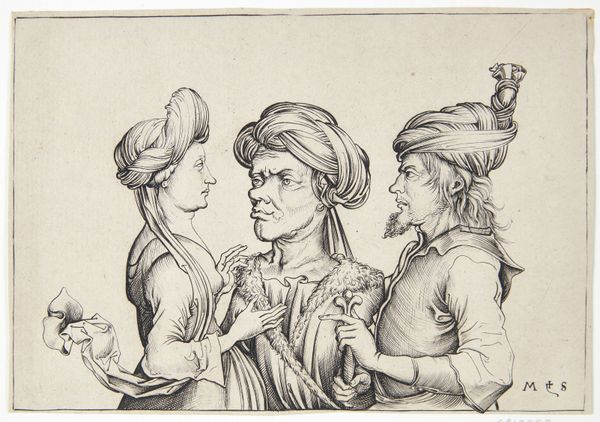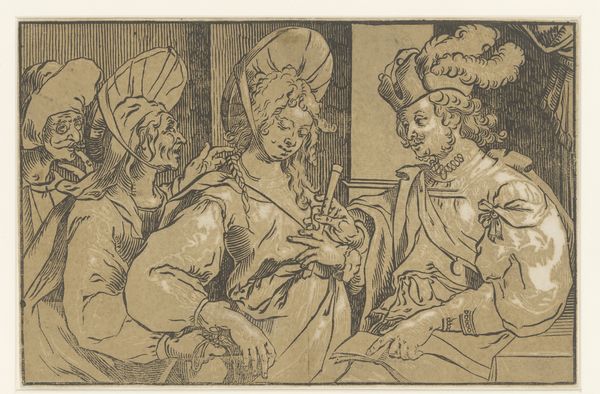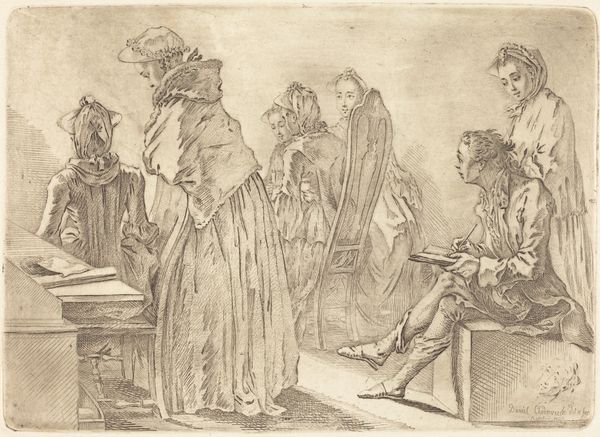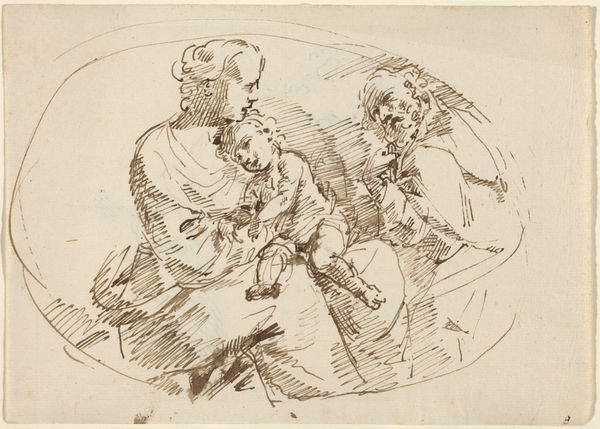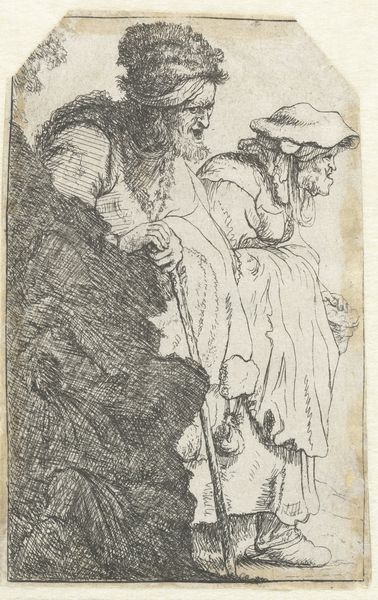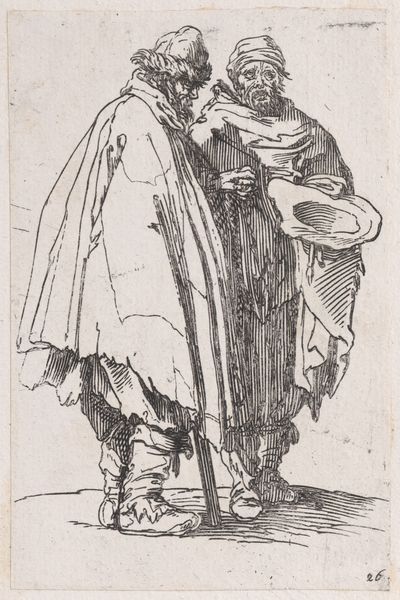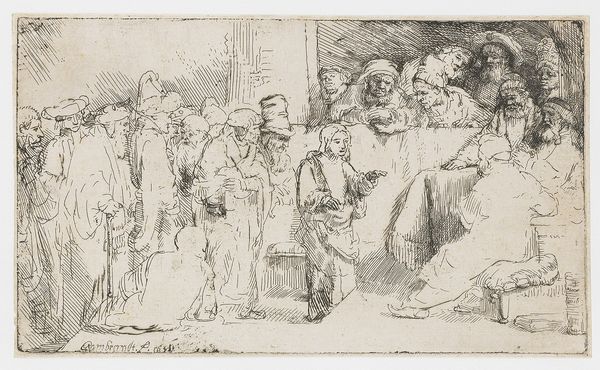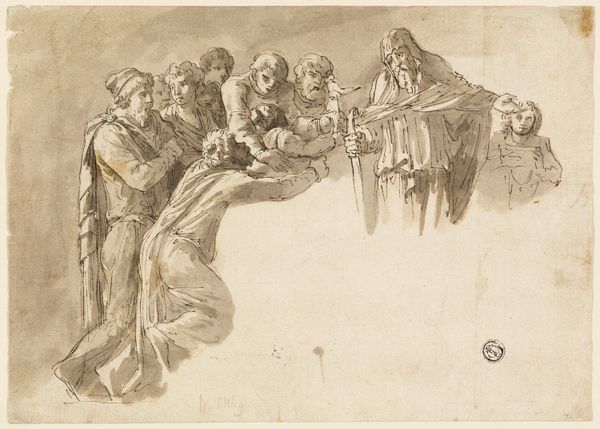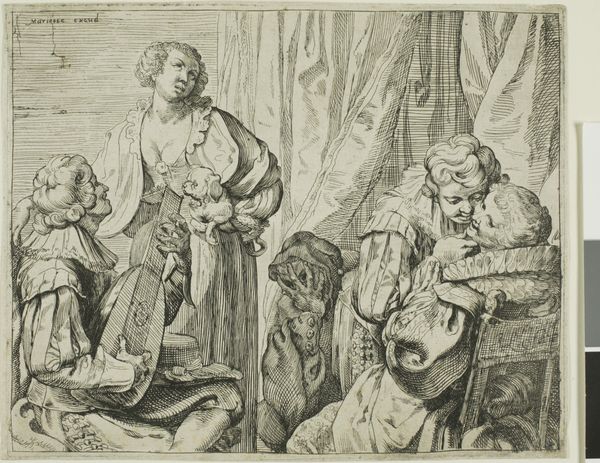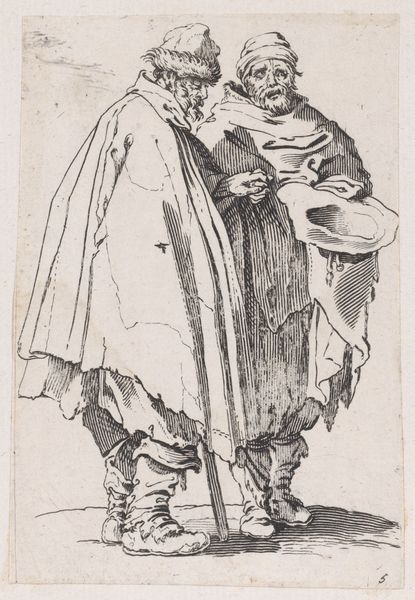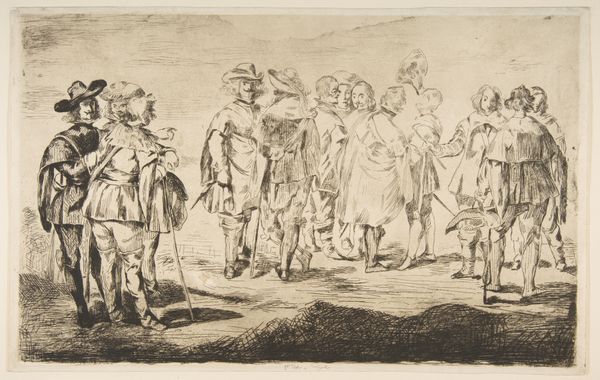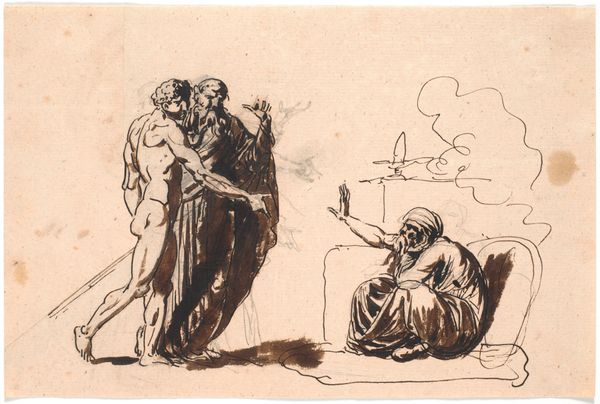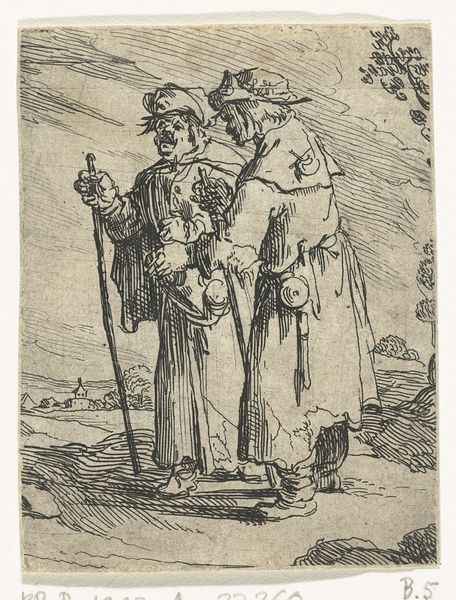
drawing, paper, ink, pen
#
portrait
#
drawing
#
ink drawing
#
baroque
#
paper
#
ink
#
pen
Dimensions: 103 × 121 mm
Copyright: Public Domain
Curator: Immediately, I see drama! They look like characters from a play. Dark, intense—very Baroque, no? Editor: It is dramatic. And you're right; its from the Baroque era, made sometime between 1622 and 1672. Pieter Jansz. is credited as the artist. The work's titled "Three Half-Length Figures" and crafted using pen and brown ink on paper. You can find it right here at the Art Institute of Chicago. What makes you say "drama"? Curator: Well, the swirling lines, the exaggerated gestures... look at that figure with the turban. He looks like he’s about to deliver a soliloquy! And the inky shadows… it's like the light just caught them mid-scene. Honestly, it feels incredibly theatrical, larger than life, almost operatic. Editor: Absolutely. But perhaps it's worth considering *who* is granted such dramatic license within the art of this period. The turban, for example, evokes an Orientalist aesthetic. The visual shorthand used to portray non-European figures often played into existing power dynamics and prejudices. The "drama," as you put it, might also reflect the exoticization of other cultures. Curator: That's a very valid point. I was caught up in the aesthetic energy. I didn't think about the underlying colonial gaze potentially at play here. But what's fascinating is how Jansz. uses the ink itself. The strokes are so confident, almost impulsive. I sense so much nervous energy in the marks! As if the paper can barely contain what's within him. Editor: Yes! And notice how he uses light and shadow not for photorealistic accuracy, but to construct mood. It begs questions, who were these models? What was Jansz trying to say through them? These are just ghostly sketches after all, open to interpretation and that is an interesting way to connect with a bygone world and perhaps, come to understand our present a little bit better, too. Curator: It does leave us pondering, doesn't it? To simply luxuriate in those sweeping lines, while being critically alert to those potential power imbalances… It's like holding two opposing realities in your mind. It makes looking, more vital, more electric, doesn’t it? Editor: Precisely. The act of observation should also be the opportunity to consider and question what narratives are being we perpetuate when engaging with works like these.
Comments
No comments
Be the first to comment and join the conversation on the ultimate creative platform.
